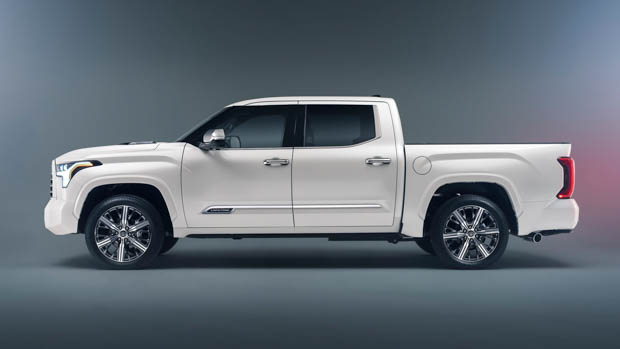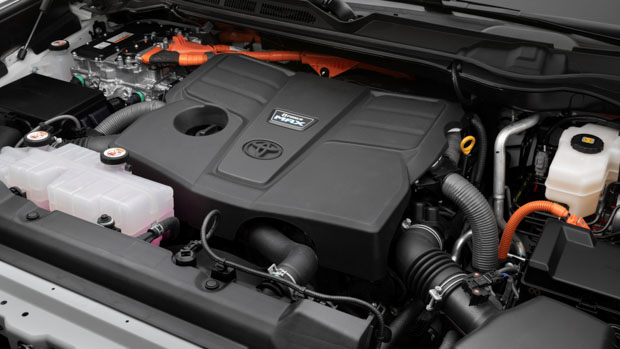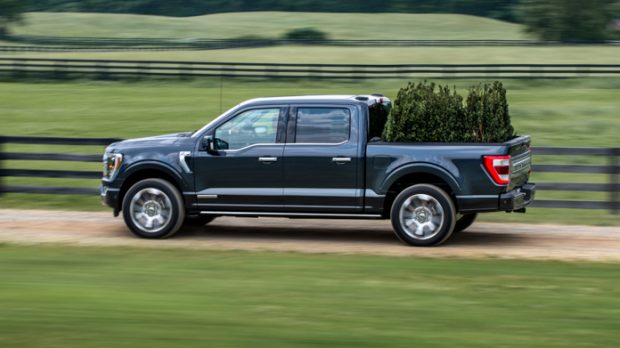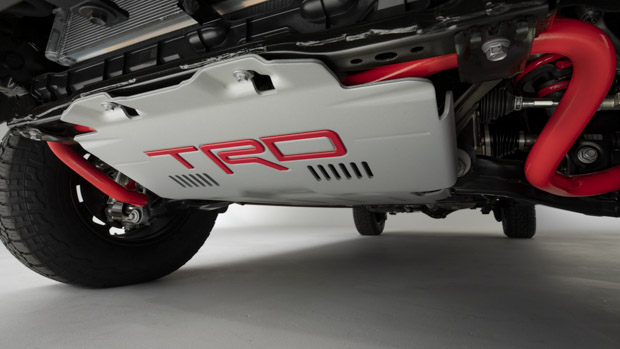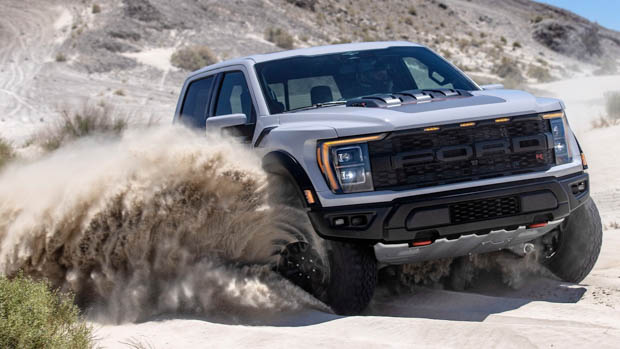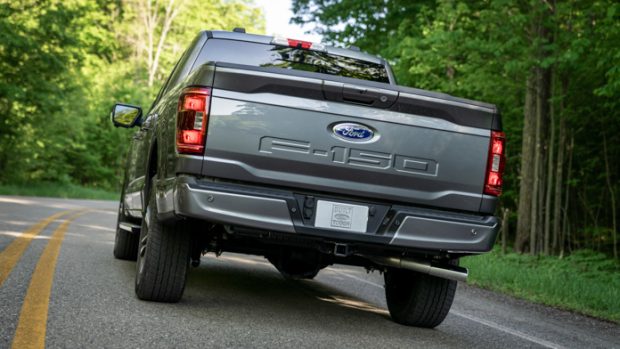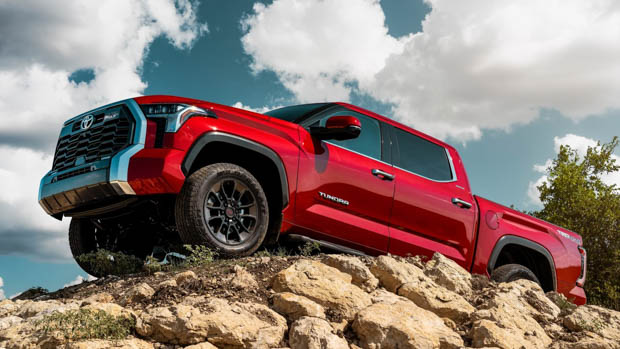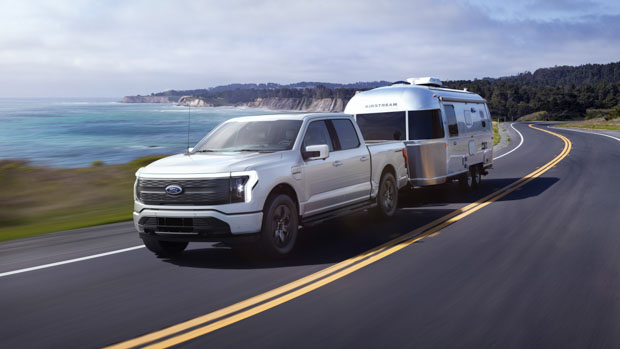-
Car Reviews
- Car News
-
Car Comparisons
Latest comparisons
- Chasing Deals
We pit the specs of two of the most hotly-anticipated pick-up trucks against one another ahead of their Australian launches
With last week’s confirmation that an Australian-spec Toyota Tundra is in development with Walkinshaw Automotive for release into the Australian market, and the fact Ford will soon launch its F-150 locally, the question arises: which super-ute will be best – Tundra or F-150?
The Toyota Tundra will be thrown into Australian development, with conversion specialist Walkinshaw set to build 300 test and evaluation mules in Australia in the fourth quarter of 2023.
The Ford F-150, on the other hand, is ahead of the pack after being confirmed by Ford in April 2022 for Australian release in mid-2023. Unlike the Tundra, these cars will be ready for customer delivery rather than technically being development prototypes.
Toyota has said that the new Tundra will be available in Australia with a 3.5-litre twin-turbocharged engine that will also have hybrid assistance.
This is almost certainly going to be the ‘I-Force Max’ system used in overseas Tundras and will likely produce the same combined outputs of 325kW/790Nm. The Tundra has a small onboard battery that is just 1.87kWh in size.
The Tundra in full-blown hybrid guise places an electric motor within the bell housing between the petrol engine and the 10-speed torque-converter automatic transmission.
We could also see the Tundra fitted with a non-hybrid version of the same V6 engine, which has lower outputs of 259kW/650Nm without electrical support.
On the blue oval front, the upcoming Ford F-150 will have a very similar setup, with Ford engineers plonking a 3.5-litre twin-turbocharged ‘Ecoboost’ V6 engine within the strut towers of the big F-150.
This unit makes 298kW/678Nm, so slightly less than the mighty Tundra. This engine is also mated to Ford’s version of a 10-speed automatic transmission. Unlike Toyota, there is no plan for an electric F-150, however the Lightning could be set for Australia.
For both utes, they will go without a V8 powertrain that has been a staple for both models for a significant amount of time.
Information on the Toyota Tundra trim levels is slim so far, however if the hybrid powertrain is anything to go by, Australians will likely receive a highly-specified Tundra that could be similar to the TRD Pro or Capstone variants currently available in North America.
However, to attract a broader range of buyers, the Australian-delivered Tundra could be the more affordable Limited trim which comes with large 20-inch alloy wheels and a 14-inch multi-media system overseas.
On the Ford front, the F-150 will be available in Australia with the choice of either a XLT workhorse variant or a more luxurious Lariat grade.
Both models will be converted to right-hand drive in Australia, with RMA Automotive dealing with the Ford F-150 and Walkinshaw Automotive responsible for the Toyota Tundra local development.
Both Tundra and F-150 will compete with the current Chevrolet Silverado and Ram 1500 trucks.
The Toyota Tundra in US spec sits with a wheelbase of 3700mm and is 5933mm long, 2072mm wide and 1981mm tall.
The Ford F-150 is slightly shorter at 5885mm long and is 2431mm wide and 1961mm tall, with a wheelbase of 3693mm.
The Ford-150 is significantly bigger than its little sibling, the Ford Ranger, that measures in much shorter at 5389mm long and 1850mm wide.
These are massive vehicles that could prove popular for those working and living in the country, but likely less so for those in the middle of the city.
Toyota has ditched leaf springs in the Toyota Tundra over in the US, where the manufacturer says it has maximised handling and performance with coil springs. The Australian-developed Tundra could retain its leaf setup, however, as it’ll likely receive an Australian specific suspension tune to suit our rough roads.
Top-of-the-range TRD Pro Tundras come fitted with Fox shocks and heavy duty coil springs to make higher-speed dirt road driving more comfortable and stable.
With the F-150, the current Lariat offered by Ford USA gains four-wheel drive as an option as well as standard selectable drive modes. Suspension is leaf at the rear, which will be a benefit for towing, but not so good when the road surface gets a little tough.
The mild-hybrid version of the Toyota Tundra has been confirmed by Toyota Australia as something that is definitely happening, but the I Force Max system is a long way from full electrification or even plug-in hybrid status.
However, for Australia, a mild-hybrid could be the best solution for the time being while executives and engineers work out how to make a fully-electric pick-up truck a possibility for the future.
Ford Australia has not yet confirmed an electrified F-150 for our market. Ford has said it wants to focus on bringing the combustion-powered model to the local market first before it turns toward electrifying its range.
The Blue Oval told Chasing Cars earlier in the year that it was “absolutely open” to new opportunities regarding an electrified F-150, however there have been no updates since that time.
Meanwhile, Ford global chief executive officer Jim Farley told the media to expect another battery-powered ute to enter production in the future.
A Ford spokesperson told Jalopnik recently that “there will be a next-gen electric truck, different from the Ford F-150 Lightning”.
Latest news
About Chasing cars
Chasing Cars reviews are 100% independent.
Because we are powered by Budget Direct Insurance, we don’t receive advertising or sales revenue from car manufacturers.
We’re truly independent – giving you Australia’s best car reviews.
